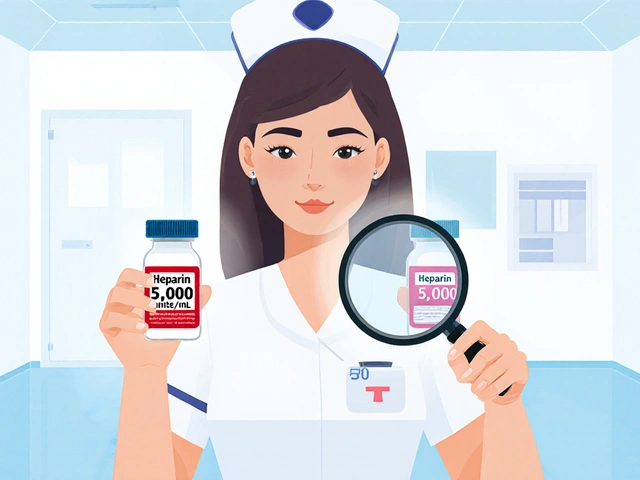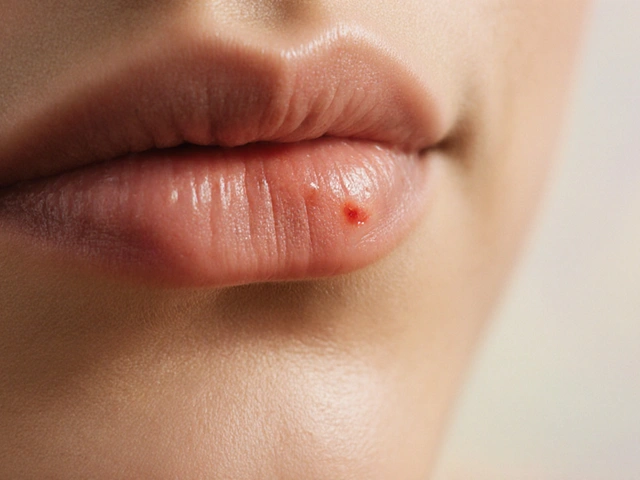Leukeran is a chemotherapy drug often prescribed for certain blood cancers. If you or a loved one have been told to start this medication, you probably have a lot of questions: how does it work, what dose is right, and what side effects to expect? This guide pulls together the essential facts you need to feel informed and confident about your treatment plan.
- Leukeran (chlorambucil) is used mainly for chronic lymphocytic leukemia (CLL) and some lymphomas.
- Typical dosing ranges from 0.1mg/kg to 0.2mg/kg per day, taken orally.
- Common side effects include nausea, low blood counts, and mild liver changes.
- Regular blood tests are crucial to catch problems early.
- Never stop or alter your dose without consulting your oncology team.
What Is Leukeran and How It Works?
Leukeran is the brand name for chlorambucil, an alkylating agent that belongs to the same family as cyclophosphamide. In plain English, it attaches a small chemical “tag” to the DNA of rapidly dividing cells, messing up their ability to copy themselves. Cancer cells-especially the B‑cell type found in chronic lymphocytic leukemia-rely on quick DNA replication, so Leukeran preferentially harms them while sparing most normal tissues.
Why does it work best for certain cancers? The answer lies in the disease’s biology. CLL cells tend to stay in the bloodstream and bone marrow where the drug can easily reach them after oral ingestion. For other solid tumours, the drug’s distribution isn’t sufficient, which is why oncologists reserve it for blood‑related malignancies.
Leukeran is taken by mouth, usually in tablet form. Once swallowed, it is absorbed through the gut and travels via the bloodstream to the bone marrow. Its half‑life is roughly 30hours, meaning it stays active in the body for a day or two, which informs the typical daily dosing schedule. Because the drug is metabolised by the liver, liver function tests are part of routine monitoring.

Dosage, Administration, and Safety Tips
Finding the right dose is a collaborative effort between you and your oncology team. The starting point is usually calculated by body weight (mg per kilogram) and adjusted based on blood work, kidney function, and how well you tolerate the medication.
Typical dosing regimens:
- Low‑dose daily: 0.1mg/kg taken every day for a 28‑day cycle.
- Standard dose: 0.15-0.2mg/kg daily, often given for 14-21 days, then a rest period.
- Pulse dosing (less common): 0.5mg/kg on days1,8,15 and 22 of a 28‑day cycle.
When you receive your prescription, follow these practical steps:
- Take the tablet with a full glass of water, preferably with food to reduce stomach upset.
- Set a daily alarm or use a medication‑tracking app to keep dosing consistent.
- If you miss a dose, take it as soon as you remember unless it’s almost time for the next one-don’t double‑up.
- Store tablets at room temperature, away from direct sunlight and moisture.
Safety monitoring is the backbone of any chemotherapy regimen. Your doctor will schedule blood tests (CBC, liver panel, renal panel) roughly every 1‑2 weeks at the start, then monthly once you’re stable. The key numbers to watch are:
- White blood cell (WBC) count - low levels increase infection risk.
- Neutrophils - the first line of defense; a count below 1.0×10⁹/L usually triggers a dose pause.
- Platelets - below 100×10⁹/L can cause easy bruising.
- Hemoglobin - watch for anemia symptoms like fatigue.
- Liver enzymes (ALT, AST) - rising values may signal liver strain.
Never ignore a lab result that looks off. If any count drops below the preset threshold, your oncologist may reduce the dose, insert a rest week, or temporarily stop treatment.

Side Effects, Monitoring, and Frequently Asked Questions
Like any chemotherapy, Leukeran comes with a side‑effect profile you should know well. While many patients experience only mild symptoms, some side effects can be serious and need prompt attention.
| Side Effect | Frequency | Typical Management |
|---|---|---|
| Nausea / vomiting | 30‑40% | Take with food, anti‑emetic meds (e.g., ondansetron) |
| Low blood counts (neutropenia, anemia, thrombocytopenia) | 50‑60% | Regular CBCs, dose adjustments, growth‑factor support if needed |
| Hair thinning | 15‑20% | Gentle hair care, discuss scalp cooling with specialist |
| Liver enzyme elevation | 10‑15% | Monitor LFTs, avoid alcohol, consider dose reduction |
| Infection risk (fever, chills) | 5‑10% | Prompt medical review, antibiotics if indicated |
Most side effects are manageable with proper monitoring and supportive care. Below are answers to the questions patients ask most often.
Can I drink alcohol while on Leukeran?
Alcohol can increase liver strain, especially if your liver enzymes are already elevated. Light occasional consumption (one glass of wine) is generally acceptable, but you should discuss your drinking habits with your oncologist and avoid binge drinking.
What should I do if I develop a fever?
A fever above 38°C (100.4°F) while on chemotherapy is a red flag. Call your treatment centre immediately-early antibiotics can prevent a serious infection.
Is it safe to become pregnant?
No. Chlorambucil is teratogenic and can harm a developing fetus. Women of child‑bearing age must use reliable contraception during treatment and for at least 6months after the last dose.
How long will I stay on Leukeran?
Duration varies by disease response. Some patients achieve remission after a few cycles, while others continue on a low‑dose maintenance schedule for years. Your doctor will base the plan on blood work and imaging results.
Can I take supplements (vitamin C, herbal extracts) with Leukeran?
Supplements that boost immune function (like high‑dose vitamin C) might interfere with the drug’s action or increase toxicity. Always review any over‑the‑counter products with your healthcare team before adding them.
Lastly, keep a simple journal: date, dose taken, any new symptoms, and how you feel. This record helps your team spot trends early and adjust treatment before problems become serious.
Next steps & troubleshooting
- If you miss a dose: Take it as soon as you remember unless it’s close to the next scheduled dose; then skip and continue as normal.
- If blood counts drop: Expect a dose pause and possible growth‑factor (G‑CSF) injections. Your nurse will guide you.
- If nausea persists: Ask for a stronger anti‑emetic or a change in timing (e.g., take with a larger snack).
- If you feel unusually fatigued: Evaluate anemia; iron or erythropoietin may be prescribed.
- If you notice bruising or bleeding: Hold the drug and seek urgent medical advice; platelet transfusion may be required.
Understanding Leukeran’s purpose, dosing nuances, and side‑effect management empowers you to stay on top of your health while undergoing treatment. Keep the conversation open with your oncology team, and don’t hesitate to reach out at the first sign of trouble. With careful monitoring and a proactive mindset, many patients successfully navigate Leukeran therapy and achieve meaningful disease control.



 Medications
Medications





Michal Clouser
September 22, 2025 AT 04:24Thank you for putting together such a thorough and compassionate guide. I’ve been managing CLL for three years now, and this is easily the clearest breakdown I’ve seen-especially the part about monitoring neutrophils and platelets. It’s easy to feel overwhelmed, but knowing what to watch for makes all the difference. I keep a printed copy in my binder next to my lab results. Small things like this help patients feel less alone.
Earle Grimes61
September 23, 2025 AT 22:27Have you ever wondered why the FDA approved chlorambucil when it’s a known mutagen? The pharmaceutical industry has a long history of prioritizing profit over patient safety-especially with older chemo agents that can’t be patented. The liver toxicity data? Suppressed. The long-term secondary malignancy risk? Minimized in the pamphlets. They don’t want you asking questions. But if you dig into the FDA’s adverse event database, you’ll see the pattern: delayed aplastic anemia, myelodysplasia, even leukemia years after treatment. This isn’t medicine-it’s calculated risk management for corporations.
Corine Wood
September 24, 2025 AT 19:22It’s easy to focus on the numbers-WBC counts, liver enzymes, dosing schedules-but what matters most is how you feel day to day. I’ve sat with patients who’ve been on Leukeran for five years. Some never lost their hair. Others had nausea so bad they couldn’t leave bed for weeks. There’s no universal experience here. The key isn’t just adherence to protocol-it’s listening to your body and trusting your instincts when something feels off. Your oncology team is there to support you, not just to monitor labs. Don’t be afraid to say, ‘This isn’t working for me.’
BERNARD MOHR
September 24, 2025 AT 22:50Bro, I’ve been thinking about this whole chemo thing like it’s a cosmic balance thing, you know? Like the universe doesn’t want us to live forever, but it also doesn’t want us to suffer needlessly. Leukeran? It’s like the universe’s way of saying, ‘Hey, your cells are getting a little too excited-calm down.’ And yeah, maybe the side effects suck-but isn’t that just part of the dance? I mean, think about it: if your body could heal itself perfectly, we’d all be immortal. But then again, what’s the point of life if there’s no struggle? 🤔 I take mine with ginger tea now. Helps with the nausea AND the vibes.
Jake TSIS
September 26, 2025 AT 08:07